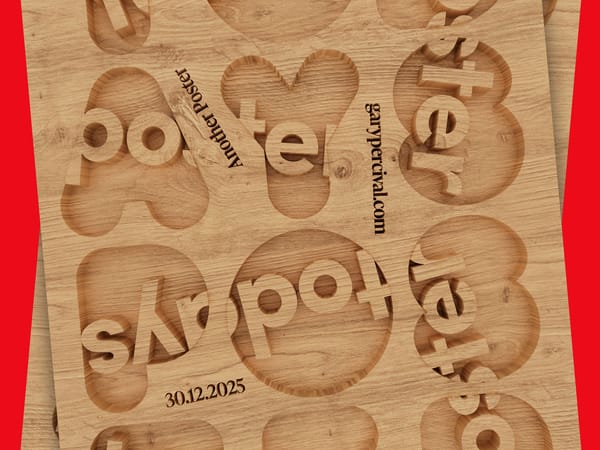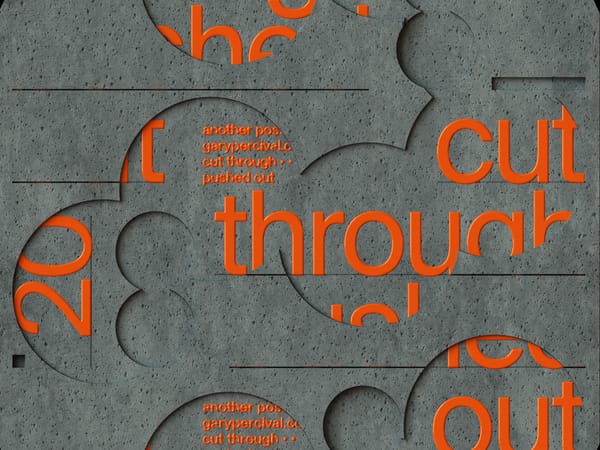Overcoming Imposter Syndrome as a Graphic Designer
Hey,
Are you a graphic designer struggling with feelings of self-doubt and inadequacy? Do you feel like you're not good enough or that your work isn't as good as others in your field?
If so, you may be experiencing Imposter Syndrome. Don't worry—you're not alone. This week, we'll explore what Imposter Syndrome is, its common symptoms, and how to overcome it.
So read on and learn how to conquer your fears and doubts!
1. What is Imposter Syndrome and how does it affect graphic designers specifically?
Imposter Syndrome is a term coined in the 1970s by clinical psychologists Dr. Clance and Dr. Imes, and it's defined as a syndrome in which people doubt their accomplishments and feel like they're frauds, despite evidence to the contrary. It often affects high-achieving individuals who are afraid of being exposed as a "fraud."
Imposter Syndrome can be debilitating for graphic designers because it can lead to self-doubt and a fear of failure. This can prevent graphic designers from taking risks and pushing themselves to create their best work.
Additionally, Imposter Syndrome can lead to isolation, as designers may feel like they're the only ones who struggle with these feelings.
There is no one-size-fits-all solution to overcoming Imposter Syndrome, but there are steps that graphic designers can take to deal with it:
- Acknowledge that Imposter Syndrome is real and that many people experience it.
- Talk to other graphic designers about their experiences with Imposter Syndrome.
- Seek out constructive feedback and use it to improve your work.
- Celebrate your accomplishments and give yourself credit where it's due.
- Remember that mistakes are part of the creative process, and they're not indicative of your worth as a graphic designer.
If you're suffering from imposter syndrome, you're not alone. By taking steps to address it, you can overcome it and continue creating great work.
2. How to Spot the Signs of Imposter Syndrome.
There are a few signs that may indicate that you're suffering from imposter syndrome:
- You're your own worst critic. You're never satisfied with your work, no matter how well it's received by others.
- You're afraid of failure. You're so terrified of making a mistake that you often don't take risks or push yourself creatively.
- You compare yourself to others and feel like you're not good enough.
- You downplay your accomplishments and feel like you're a fraud or an impostor.
- You isolate yourself. You may feel like you're the only one who struggles with these feelings, so you keep them to yourself.
If you can relate to any of these signs, you may be suffering from Imposter Syndrome.
3. Overcoming Imposter Syndrome with positive self-talk, goal setting, and networking.
Imposter Syndrome is a very real and common experience for many graphic designers. For freelancers, it can be especially tough to deal with, as the feelings of self-doubt and insecurity can be amplified when working alone.
However, there are ways to overcome imposter syndrome and achieve success.
The first step is to give yourself some positive reinforcement. Talk to yourself in a supportive way, reminding yourself that you are capable and talented.
Second, set realistic goals for yourself and make sure to celebrate your accomplishments along the way. This will help you to stay focused and motivated.
Finally, networking with other professionals is a great way to build confidence and get helpful feedback. Surrounding yourself with people who believe in you will help you believe in yourself too.
With some self-care and effort, you can achieve your goals and reach your full potential as a graphic designer.
4. The benefits of overcoming imposter syndrome.
Graphic designers who overcome imposter syndrome can enjoy a number of benefits. Perhaps most importantly, they can find greater satisfaction in their work.
When they're no longer haunted by self-doubt, graphic designers are free to experiment and push themselves creatively. They can also better connect with their clients and peers, leading to more productive and enjoyable collaborations.
Additionally, overcoming Imposter Syndrome can help graphic designers feel more confident in their abilities, making them better equipped to deal with challenges and setbacks.
In summary, overcoming imposter syndrome can lead to a more fulfilling and successful career as a graphic designer.
5. Final thoughts on imposter syndrome and how to continue combating it in the future.
Although imposter syndrome can be a major roadblock for graphic designers, there are ways to continue combating it in the future.
First, it’s important to understand and recognise the symptoms of Imposter Syndrome. This way, you can be more mindful of when it’s impacting your work.
Second, talk to other graphic designers about their experiences with Imposter Syndrome. This can help you feel less alone and more connected to the community.
Finally, don’t be afraid to ask for help. If you feel like you’re struggling with imposter syndrome, reach out to a friend or mentor for guidance. With these tips, you can continue fighting imposter syndrome and become a more successful graphic designer.
Although Imposter Syndrome can be a major hurdle for graphic designers, it's important to remember that you're not alone. Many professionals experience these feelings at one time or another. There are ways to combat them, and with a little bit of effort, you can start to feel more confident in your skillset and abilities.
I hope the tips I've shared have been helpful, and I encourage you to keep exploring and growing as a designer.
Thanks for reading!
—Gary



